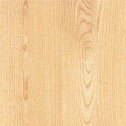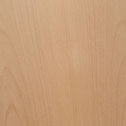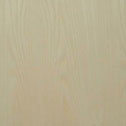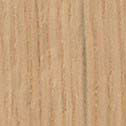The wood
Forests and woods are the primary sources of our timber. There is great variety in the types of wood that we use: porous with considerable grain to light, nearly invisible grain, or solid, very heavy, and full of knots. Soft and supple woods are easy to work, but are also very delicate, while the harder woods are characterized by a higher solidity and great resistance to scratches.
Pettenasco’s lathe turners know all types of timber well, and based on the characteristics of the specific type of wood are able to create products and other objects of superior quality.
Classification of the main types of wood and their potential uses
Soft woof
|
|
 |
SPRUCE Soft, lightly colored wood, the spruce’s characteristic scent distinguishes it from other types of wood. The term spruce is used to describe wood obtained from a variety of different plans such as the pine, the larch, and the fir trees. While this wood was not always valued, today it is appreciated for its usefulness in the creation of doors, windows, and other furniture items. |
|
|
|
 |
CEDAR Soft, light orange wood. The cedar’s characteristic scent keeps insects away. Simple to work. Used to create furniture, bowls, and spoons. |
|
|
|
 |
CHESTNUT Yellowish or brownish white with lightly visible veins and many knots, pliable and robust, not very compact with a low specific weight. This wood must be left to mature for a long time before it is ready to use for furniture; in fact, chestnut tends to “move” and split. It was once used as imitation oak and walnut. This wood is not suitable for woodworking. |
 |
ELM Elm is light brown and gets darker over time. It is very hard, solid, stiff, and robust. It does not split easily, though it is possible to lathe and carve this type of wood. Appropriate for use in chairs, elm is sensitive to humidity and woodworms.. |
 |
WALNUT Walnut is wood with a strong core. It is brown in color. It can be light in the case of young trees or dark in older trees. The wood has compact fibers and is pliable yet heavy. Its consistency is hard but malleable. It has little resistance when it comes to bugs and other atmospheric agents. Walnut is a very precious wood. It is used in the area mostly to create valuable furniture. |
 |
MAHOGANY Dark red in color, this wood is hard, solid, and easy to work. It is very finely grained and can be polished without becoming deformed. Among the most highly valued woods, there are many varieties of mahogany. It is generally imported from Central America. In Pettenasco mahogany has been used since the 50s, following the end of World War II. |
|
|
|
|
|
OAK A very hard, yellowish brown oak. A very solid and robust wood, it is prepared for use in the construction of windows, stairs, and barrels. Its nectar, called tannin, delays the fermentation of wine and lends it a particular aroma. |
 |
PEAR This type of wood is used to create small-scale objects. It is hard and heavy and absorbs alcohol-based color very well; during the finishing process takes on a beautiful shine. It does not bend out of shape. Pear tree wood is easy to work and does not crack. It is reddish in color.
|
 |
BEECH This wood is whitish or reddish yellow. It tends to track and become deformed and is not very pliable. It is possible to curve this wood using steam to make it more flexible. Very sensitive to woodworm attacks, beechwood is hard and good for working. It is used primarily in the production of bowls, pepper grinders, and chair, stool, and table legs.
|
 |
ASH Ash is hard but versatile and easy to work. It is a pearly reddish white but can also have green undertones. It is easy to clean and polish. It is used primarily for the handles of small tools such as hammers, chisels, and blades. |
 |
BIRCH Hard and grainy, this wood light yellowish white and sometimes even pink. It was used in the handles of small tools such as hammers, chisels, and blades. |
 |
CHERRY This wood is orange or brownish red with grains, very hard and compact with average fibers. In wood turning workshops it was used in bowls and decorative cutting boards. Antique cherry wood furniture pieces that include planks larger than 40 cm across are especially valuable. Cherry wood is easy to work and shines beautifully if finished with French polish or beeswax. |
 |
ROSEWOOD Rosewood is very hard. It is highly compact, a veined and fragrant purplish red. It finishes and polishes very well. It comes either from Brazil or eastern India. It is difficult to work with because it is very oily and fragile. It has been used in Pettenasco since the 50s, following the end of World War II. |
 |
WENGE Not suitable for woodworking, this wood has cropped up in artesian workshops in products of high design. It comes from Mozambique, where it is also sold under the local name of panga-panga. It is hard, heavy, and durable enough even for outdoor use. Its fibers are very straight and the wood tends to become worn out as it is worked. |
 |
ALDER Alder wood is reddish orange in color and is among the shorter-lived woods. It is soft-cored and part of the broad-leaved family. It is water-resistant, very solid, and suitable for all types of lathe working. |
- Top of page -



